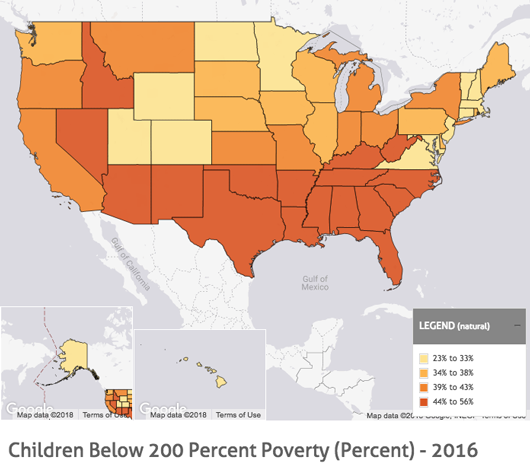Two in Five U.S. Children Live in a Low-Income Family

Across the United States, 41% of kids live in low-income families. While this statistic has fallen since 2013, it has yet to return to its pre-recession rate of 39% in 2007.
The likelihood that a child grows up in a low-income family varies widely by race and ethnicity. White and Asian and Pacific Islander children are least likely to live in a low-income household — just 29% of kids from these demographic groups do. But other children face double the risk: 61% of American Indian and African-American kids as well as 59% of Latino children live in a low-income family.
This statistic also varies by state. For example: 56% of kids in New Mexico live in a low-income family while just 23% of kids in New Hampshire do.
Among the 30 million children across the country who are growing up in low-income families, 96% live in a home where at least one adult is working. Despite this high rate of parental employment, the family finances of low-income households are often so tenuous that building a safety net can be challenging if not impossible.
The data also indicate that America’s youngest children — infants to age 8 — are more likely than their older counterparts to grow up in a low-income household. Whereas 41% of all kids live in a low-income family, a sobering 44% of young children do.
Access more economic well-being data on the KIDS COUNT Data Center:
- Children below 200% poverty
- Children below 200% poverty by race
- Children ages 0 to 8 at or above 200% poverty
- Children ages 0 to 8 below 200% poverty
- Children in low-income working families by age group
- Children living in low-income households where no adults work
- Low-income working families with children
- Children in extreme poverty by race and ethnicity
- Children below 250% poverty






